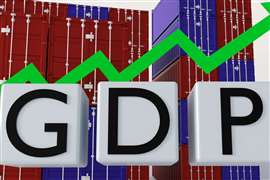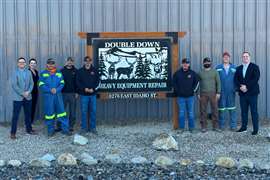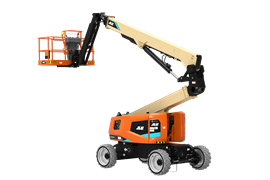Read this article in Français Deutsch Italiano Português Español
What the recent Fed rate cuts mean for manufacturing
07 October 2024
At the recent National Fluid Power Association’s (NFPA) 2024 Industry & Economic Outlook Conference (IEOC), Alan Beaulieu, consulting principal for ITR Economics, said that manufacturers will face a number of headwinds throughout the rest of the decade. These include rising input costs, electricity costs and challenges in the labor market.
The advice he offered attendees was to borrow now and invest in making their businesses more efficient.
“You’re going to want to take your business and make sure that you’re dealing in a way that you can get ahead of the PPI [producer price index] costs, the labor costs, the electricity costs,” he said. “You’re going to make yourself so efficient that you can remain very profitable, even as the costs are going up.”
On September 18, about a month after the IEOC, the U.S. Federal Reserve cut its policy interest rate by what many considered an unusually large 50 basis points, or half a percent. Lauren Saidel-Baker, economist and senior consulting speaker also with ITR Economics, spoke to Power Progress about this development and what it means for manufacturers.
The Fed’s Mandate
 Photo: Monster Ztudio via Adobe Stock
Photo: Monster Ztudio via Adobe Stock
Calling the rate drop a bit more aggressive than what ITR was expecting, Saidel-Baker said, “The market was 50/50 between 25 basis points and 50 basis points. So, you really couldn’t come down to more of a toss-up.”
She explained that the reason for the rate cut goes to the Fed’s dual mandate to foster both price stability and full employment. Saidel-Baker said interest rates had previously been high to address price stability and high inflation.
“The Fed got burned by inflation during the early part of the pandemic,” she said. “They thought that inflation was going to be transitory. It was not transitory. Instead, inflation rates climbed to a peak in 2022 and remained elevated compared to recent history, resulting in the Fed keeping rates higher for longer than many had expected. If you look back to early this year [in] January, we thought we were going to get rate cuts much sooner — more of them this year. But inflation was sticky.”
However, inflation is now approaching 2 percent, the Fed’s target rate.
“It’s moving in the right direction,” she said. “We think disinflation will persist for the rest of this year, but they started to see some cracks forming in the labor market, so that balance shifted back to, all right, we need to start cutting rates.”
Labor Woes
Saidel-Baker explained that inflation related to goods is under control in terms of prices. However, services inflation remains persistent — that aforementioned “stickiness” — and it isn’t likely to improve any time soon.
“We’ll get a little bit of a reprieve here in 2024,” she said. “But long term, due to demographic issues — we don’t have new Gen Z, that generation, just aging into the workforce now. They’re actually smaller than millennials were as a generation. So, they are not of sufficient size to replace all these retiring baby boomers.”
Additionally, Saidel-Baker said that the prime-age labor force participation rate is at a 20-year high, meaning there are not many other available workers, either.
Borrow Money Now
The Fed has said it intends to do two more rate cuts of 25 basis points this year, according to Saidel-Baker. However, she added that inflation is expected to increase next year, meaning there is a chance the Fed will raise rates again by the end of 2025 to mitigate that. Regarding Beaulieu’s advice to manufacturers that they should borrow now to invest in efficiencies, she said that advice remains solid.
“On the one hand, maybe we get 100 basis points total for the cutting cycle,” Saidel-Baker said. “Maybe — let’s go crazy and say 150. Is that really going to move the needle in terms of waiting to make that investment, where you’re losing that upside when demand bounces back in 2025 and beyond?”
She added that there’s value in, too, in manufacturers investing in equipment on their schedule so that it can be installed when they have downtime. Additionally, while the labor market is tight, it’s looser now than it may be, meaning companies can invest in qualified personnel, train them, lock in employment costs this year and be ready for 2025.
“The big caveat is, it’s going to be worth it if the investment is the investment you need to be making,” Saidel-Baker added. “I see a lot of folks just looking at automation and AI, and they’re throwing money at the problem, but they don’t have an AI plan. It needs to be the right investment — that is first and foremost. But if it is, I wouldn’t be waiting for future cuts to start to move.”
2025 Inflation Drivers
The rise in inflation expected in 2025 will be due in part to the industrial economy.
“It’s essentially flat — maybe flat with a very slight downward bias,” Saidel-Baker said, “but essentially just a plateau in activity. By 2025, the leading indicators are showing that demand is coming back. Activity will be bouncing back. As that heats up the cycle, that tends to move inflation in a positive direction.”
Commodity prices will be supporting inflation, she said, as will labor concerns, such as rising wage costs.
“Those are not going anywhere,” Saidel-Baker said. “They’ll take a little reprieve this year before they really come back.”
One issue concerning Saidel-Baker — one that is not particularly well known — is gross treasury issuance, which is the amount of debt issued by the United States Treasury in the form of Treasury bills, bonds and notes.
“It spiked during the pandemic because we had the PPP [Paycheck Protection Program] loans and the stimulus checks and all of that liquidity essentially just being pushed into the market to keep the wheels turning on the economy, just to keep the thing moving forward,” she said. “That very directly led to this recent bout of inflation.
“So, today, it’s surprising to many folks to learn gross treasury issuance is actually higher than it was at that pandemic 2020 peak. This is inflationary.”
Saidel-Baker added that gross treasury issuance does not have a real-time inflationary impact. It has a year or two of lead time, which means it will likely drive inflation up in 2025.
“It’s not higher inflation than we saw this past cycle — that was very extreme,” she said. “We had about a 9 percent peak in the consumer price index. But it’s also not staying in this happy 2 percent range that the Fed’s been targeting. And certainly, we’re nowhere near the past decade — call it that 2008 recovery to right up until the pandemic. In that period, consumer price inflation was typically below 2 percent.”
POWER SOURCING GUIDE
The trusted reference and buyer’s guide for 83 years
The original “desktop search engine,” guiding nearly 10,000 users in more than 90 countries it is the primary reference for specifications and details on all the components that go into engine systems.
Visit Now
STAY CONNECTED




Receive the information you need when you need it through our world-leading magazines, newsletters and daily briefings.
CONNECT WITH THE TEAM














